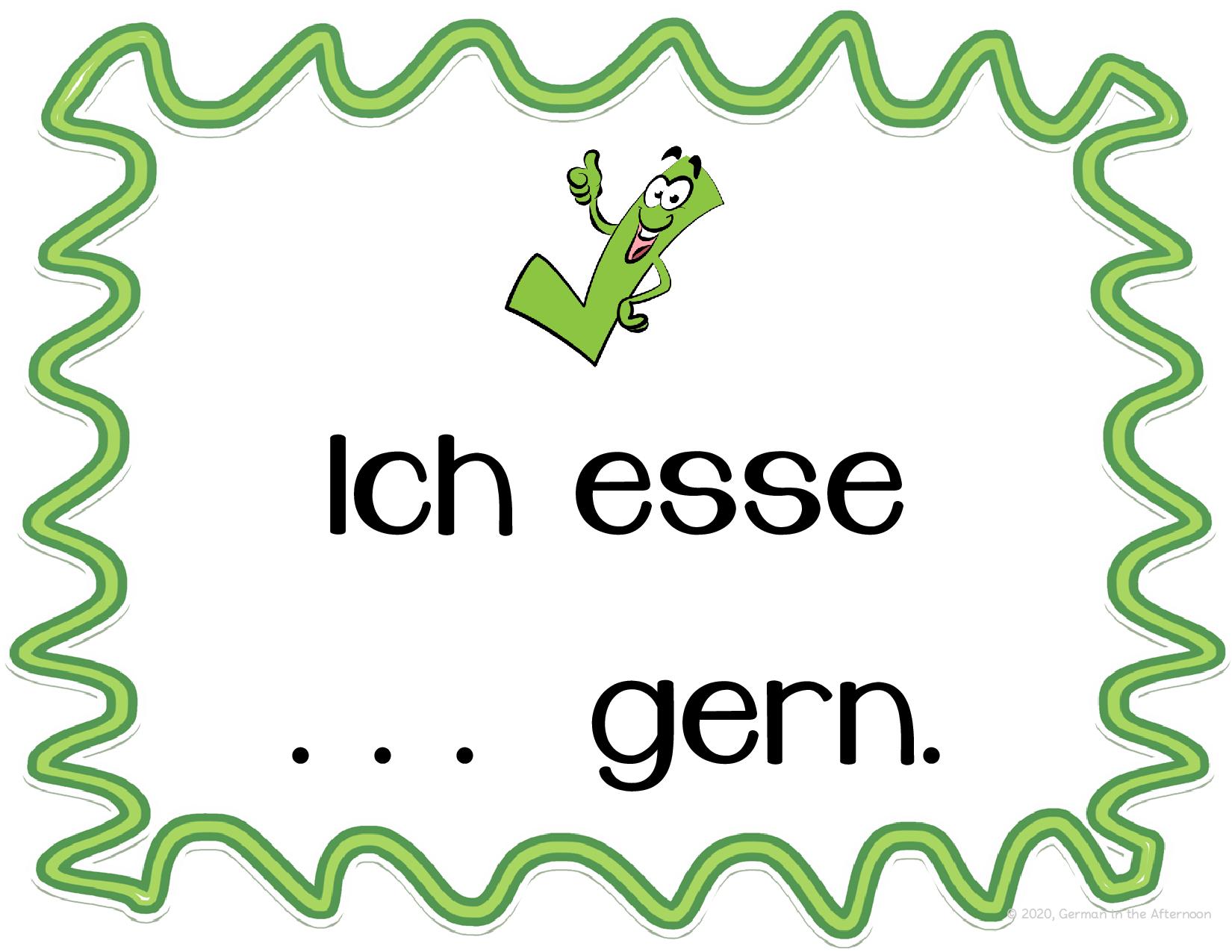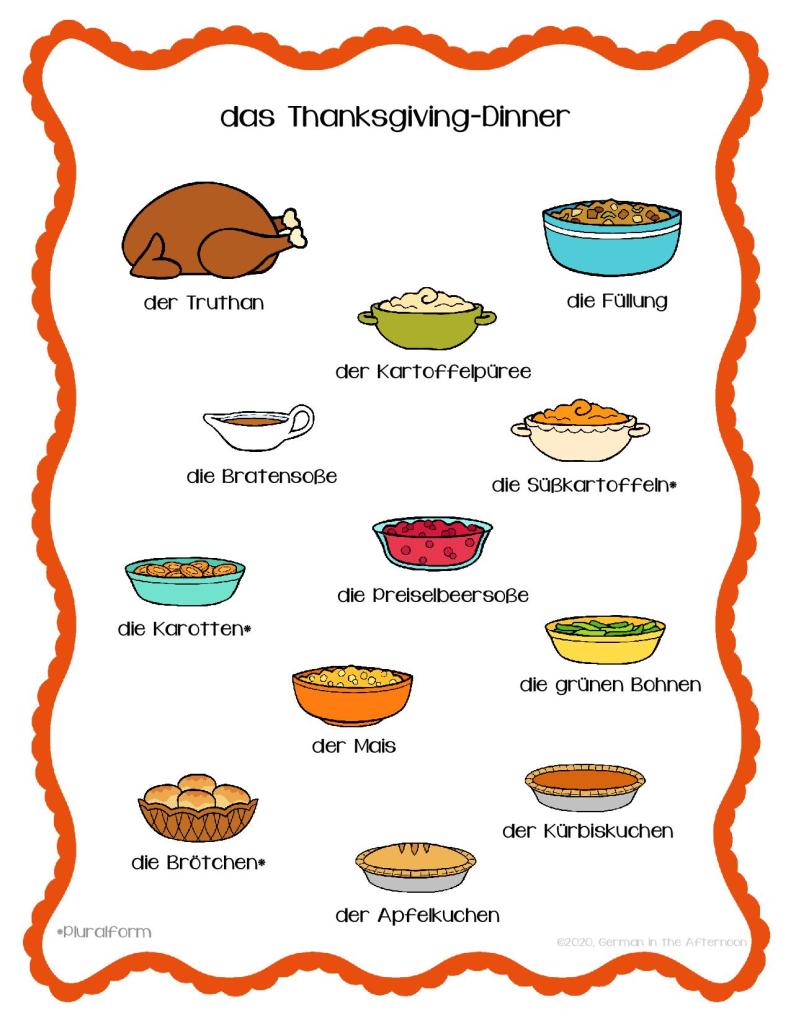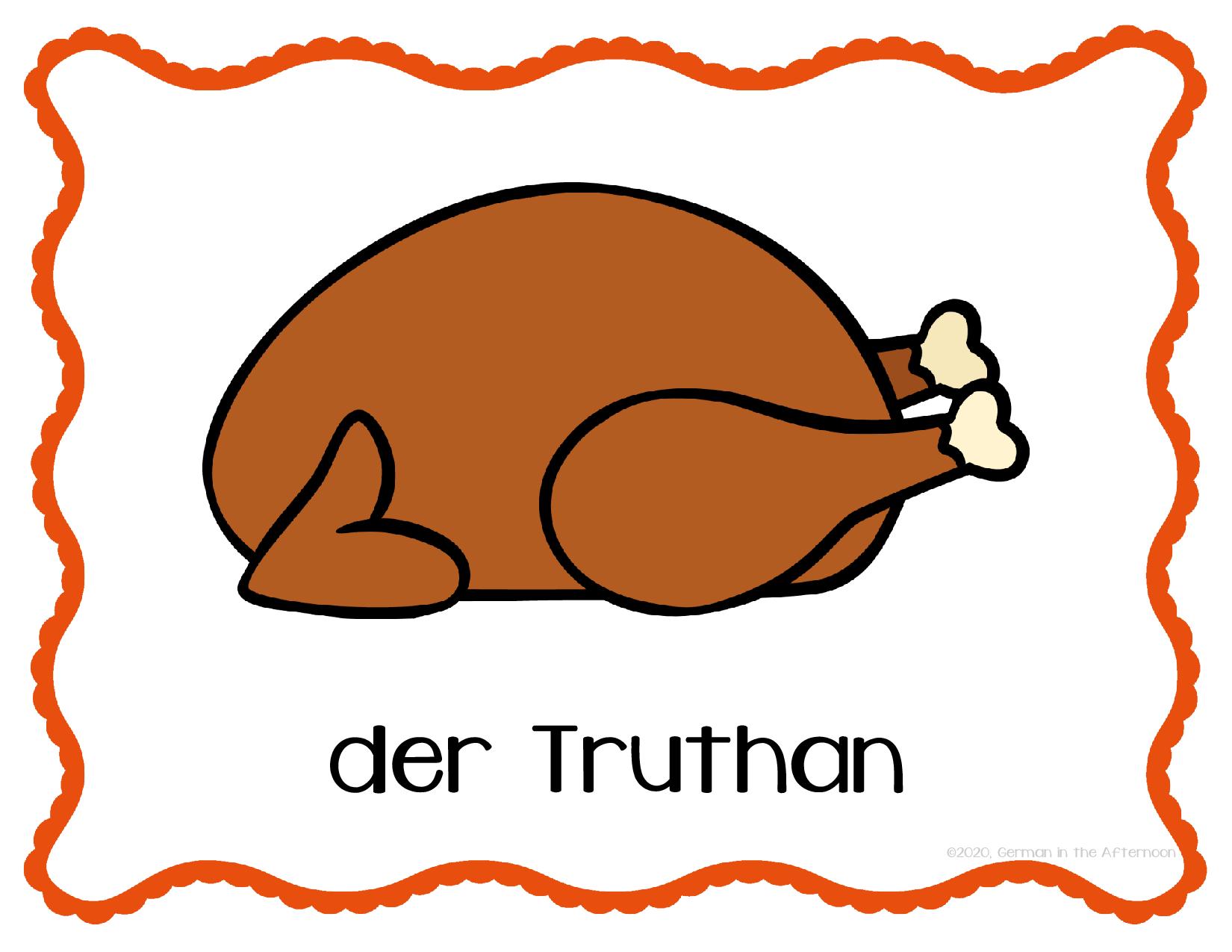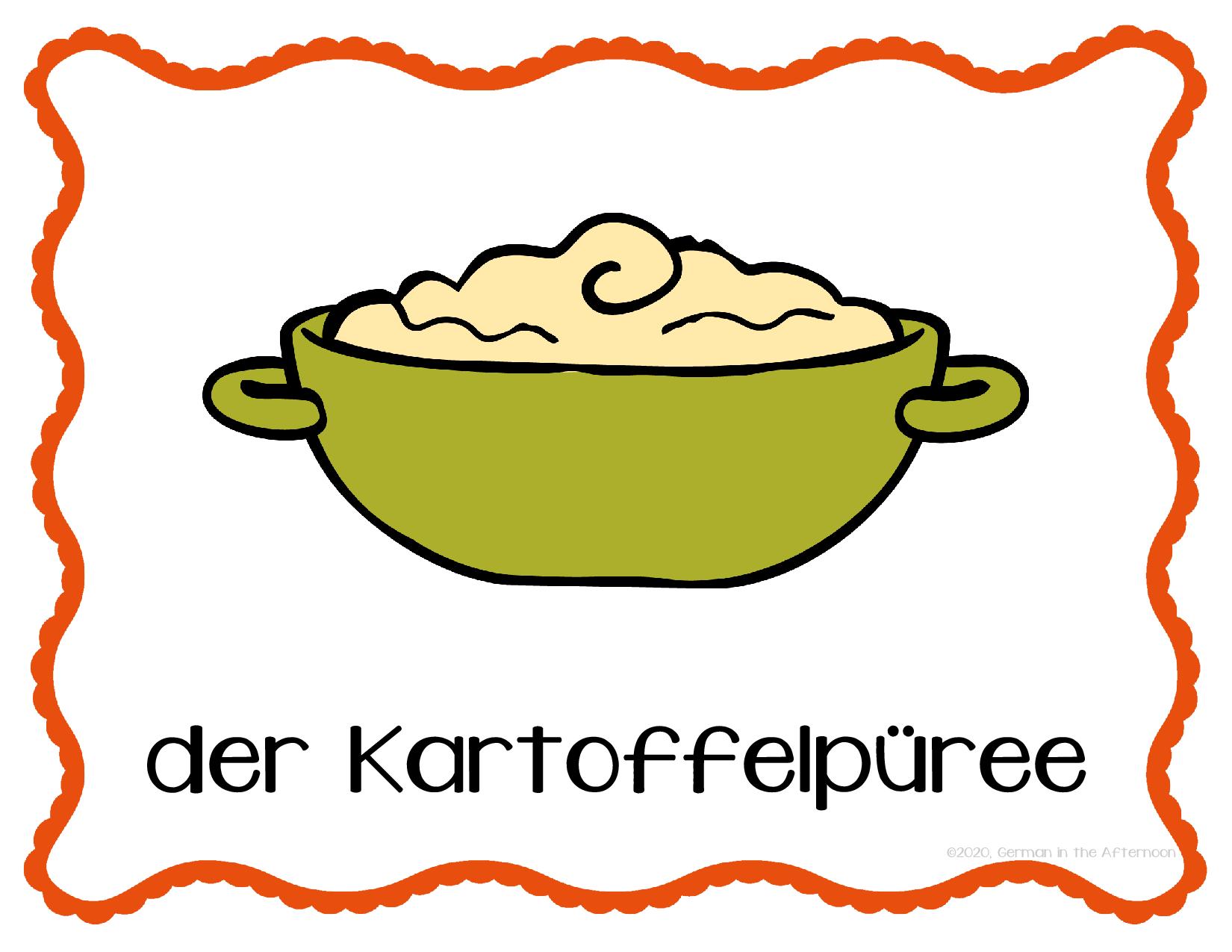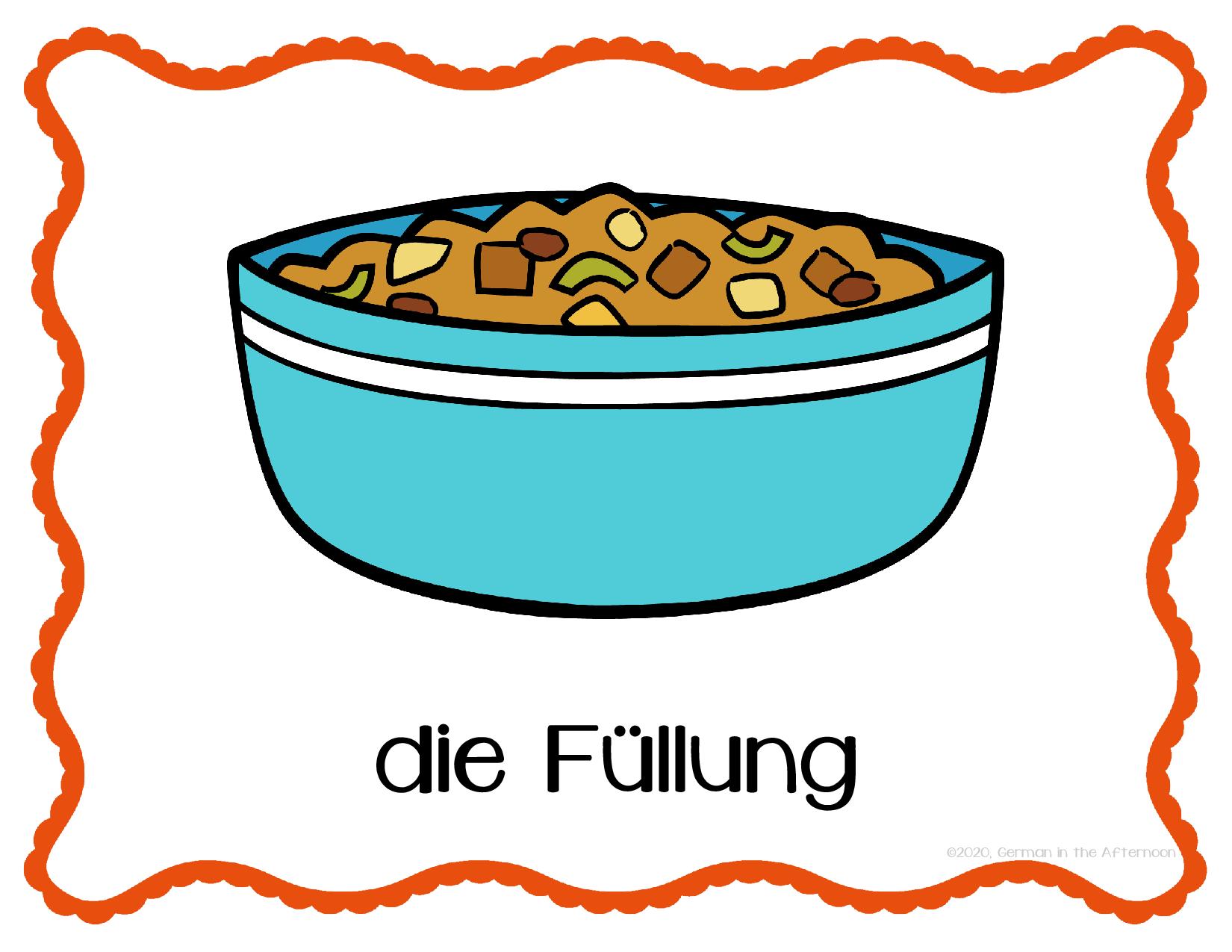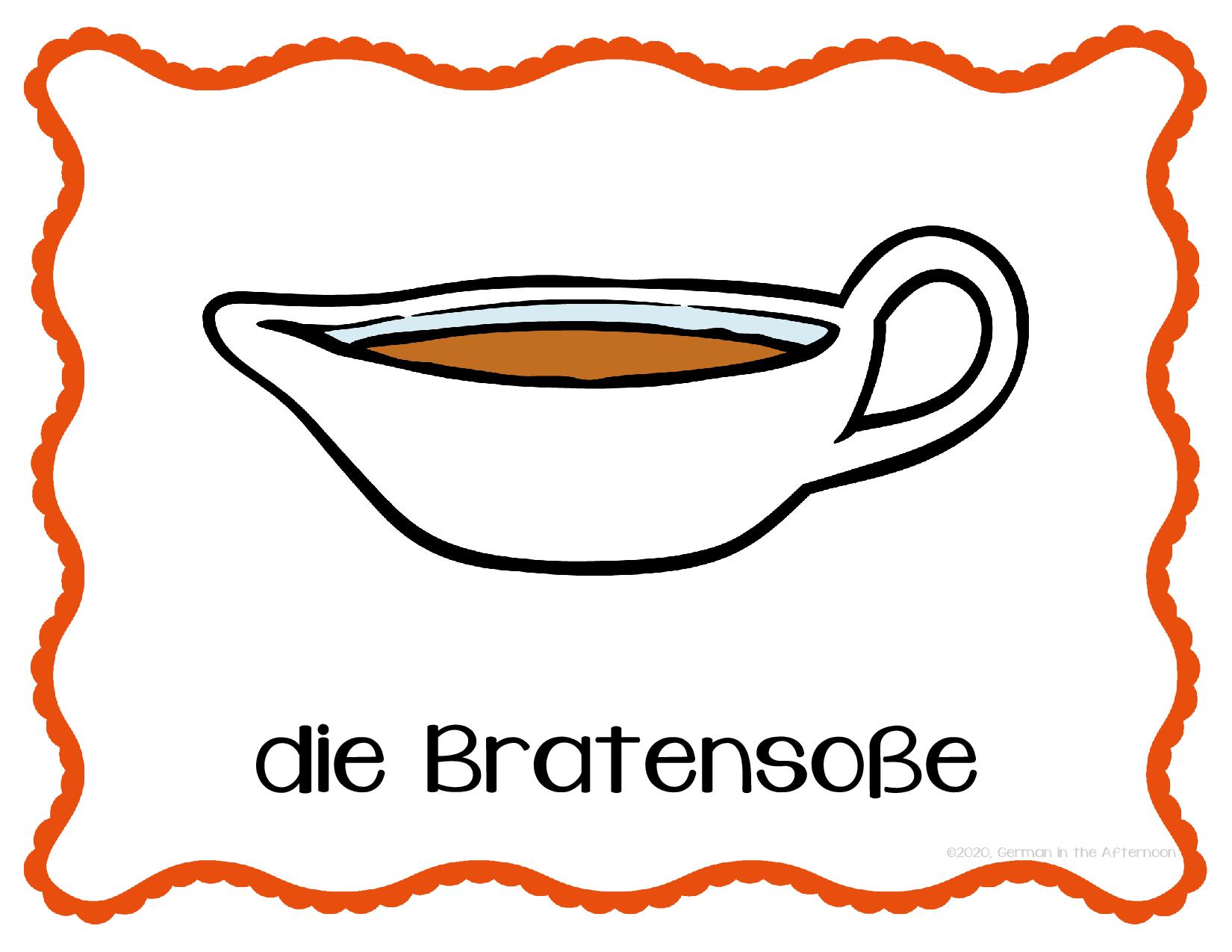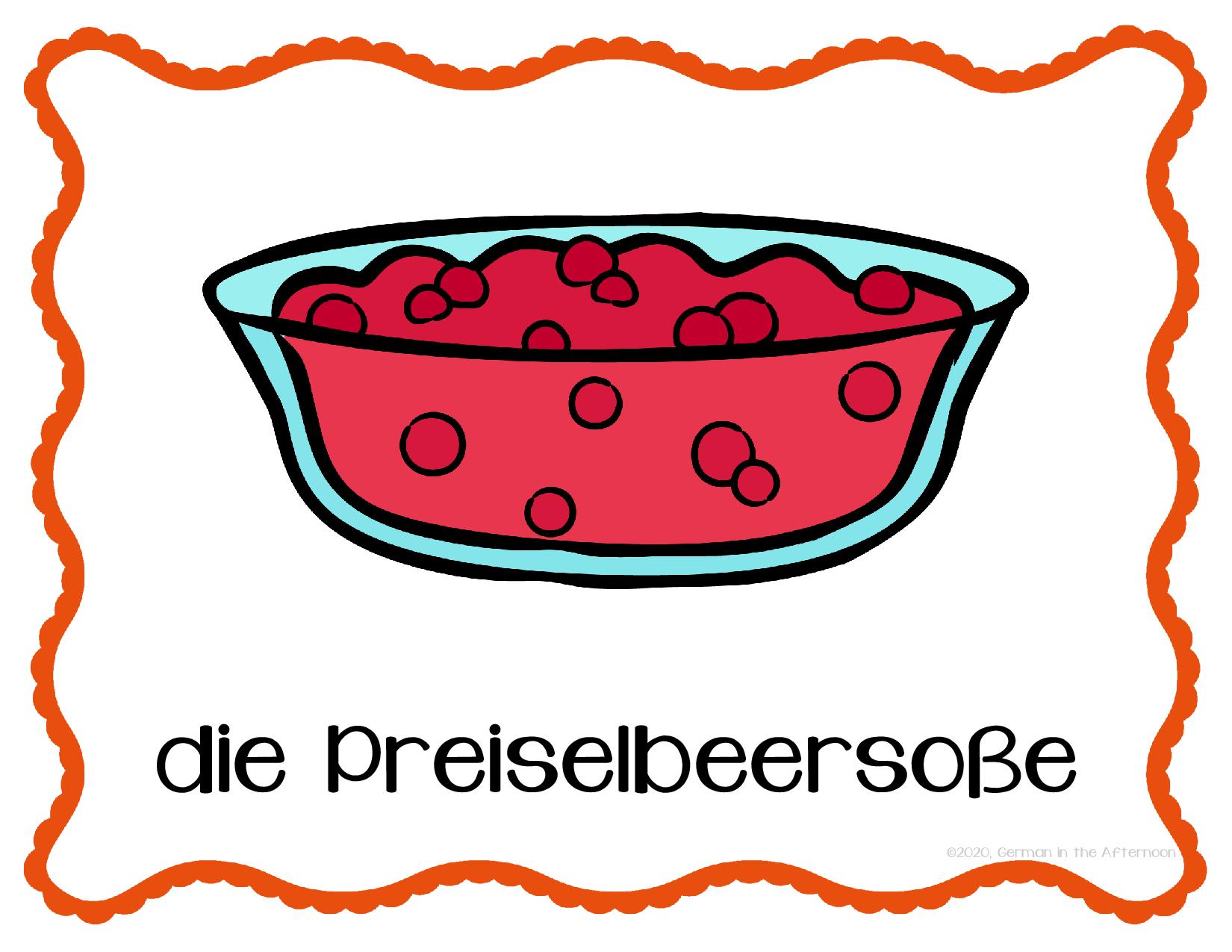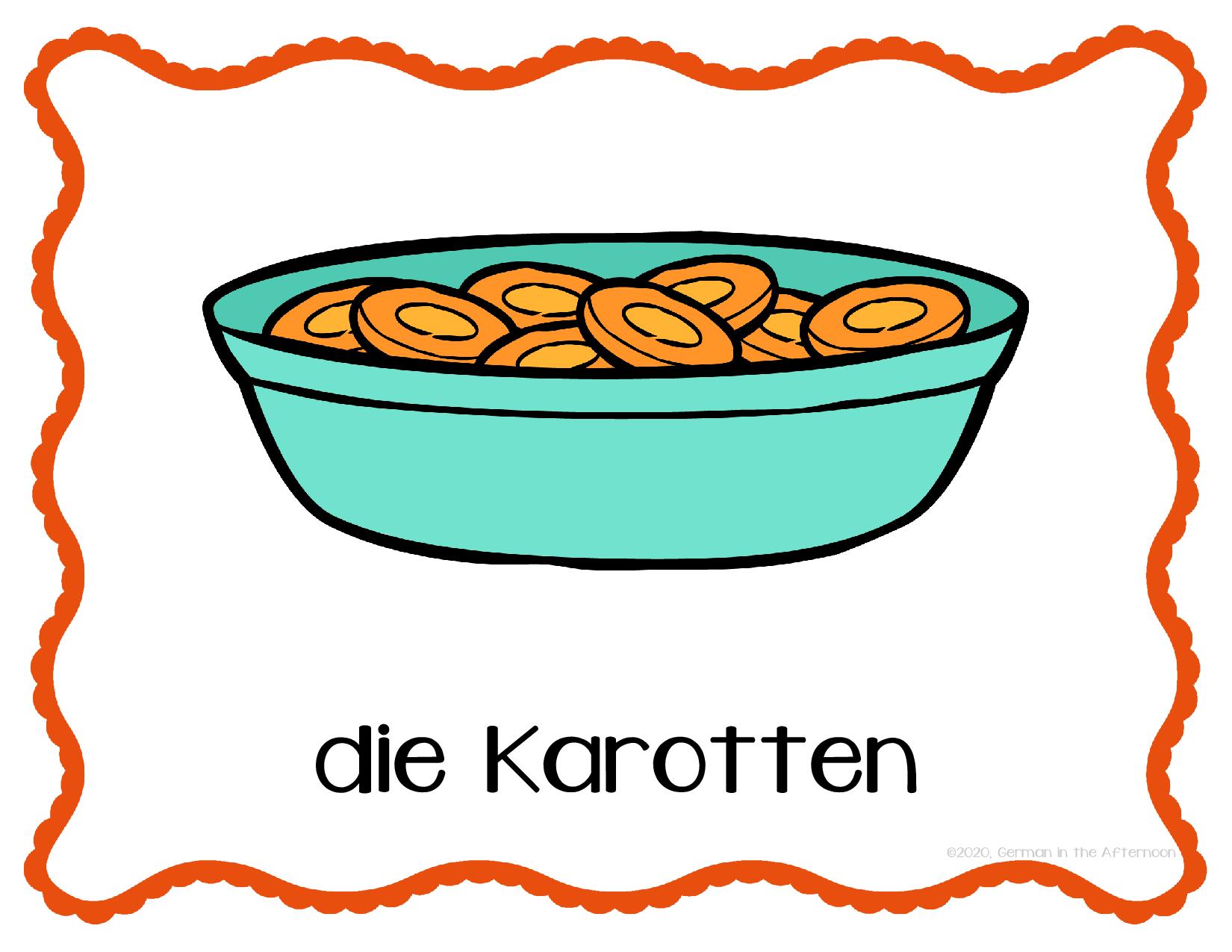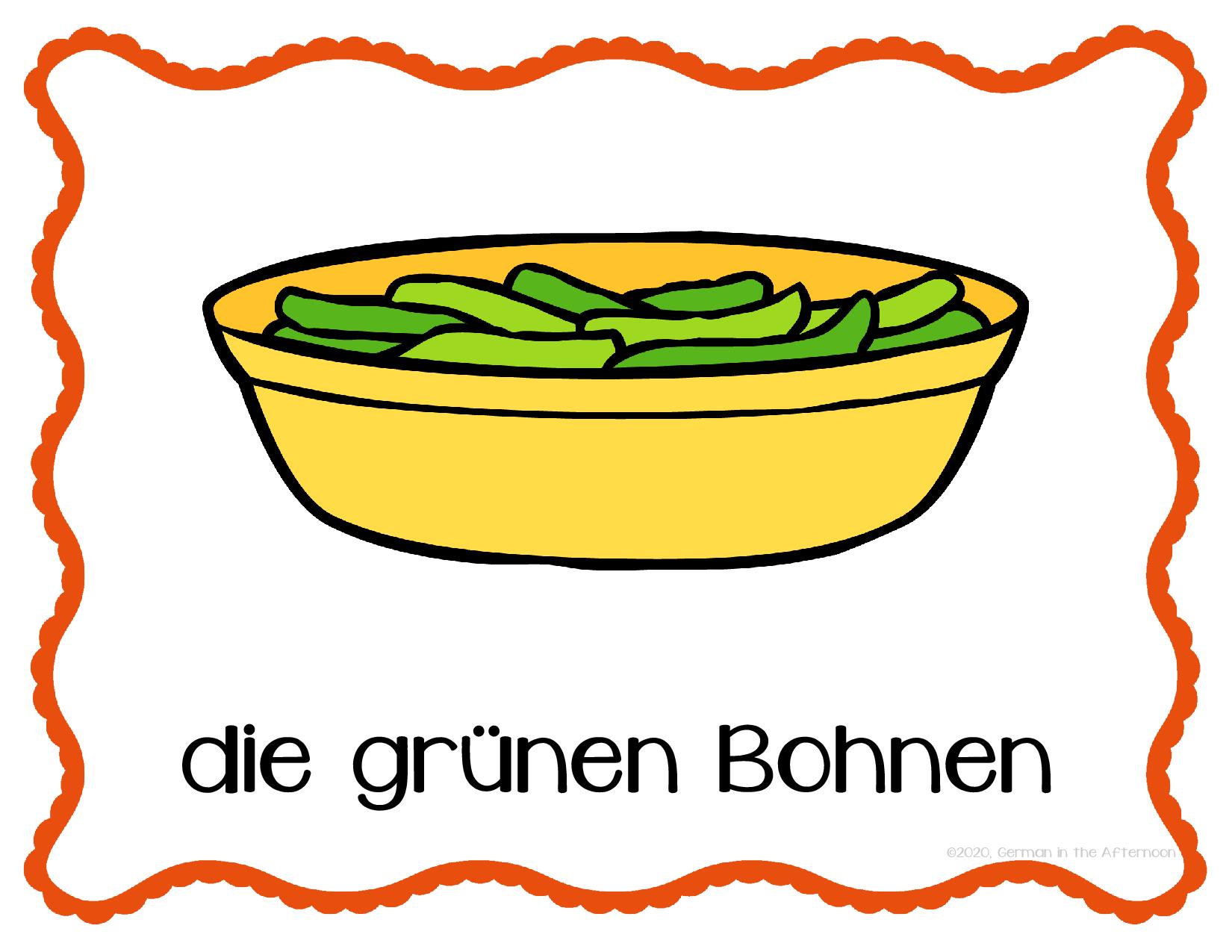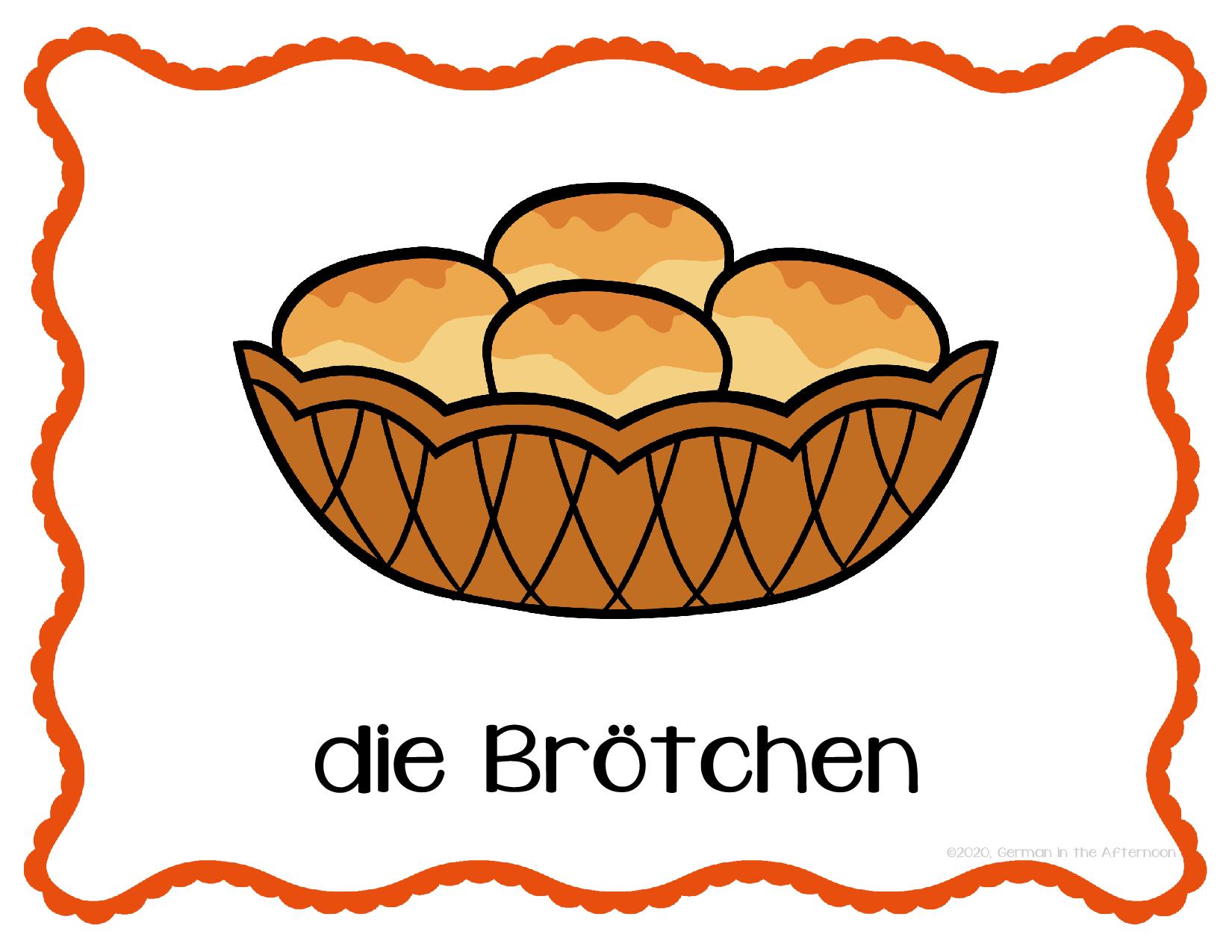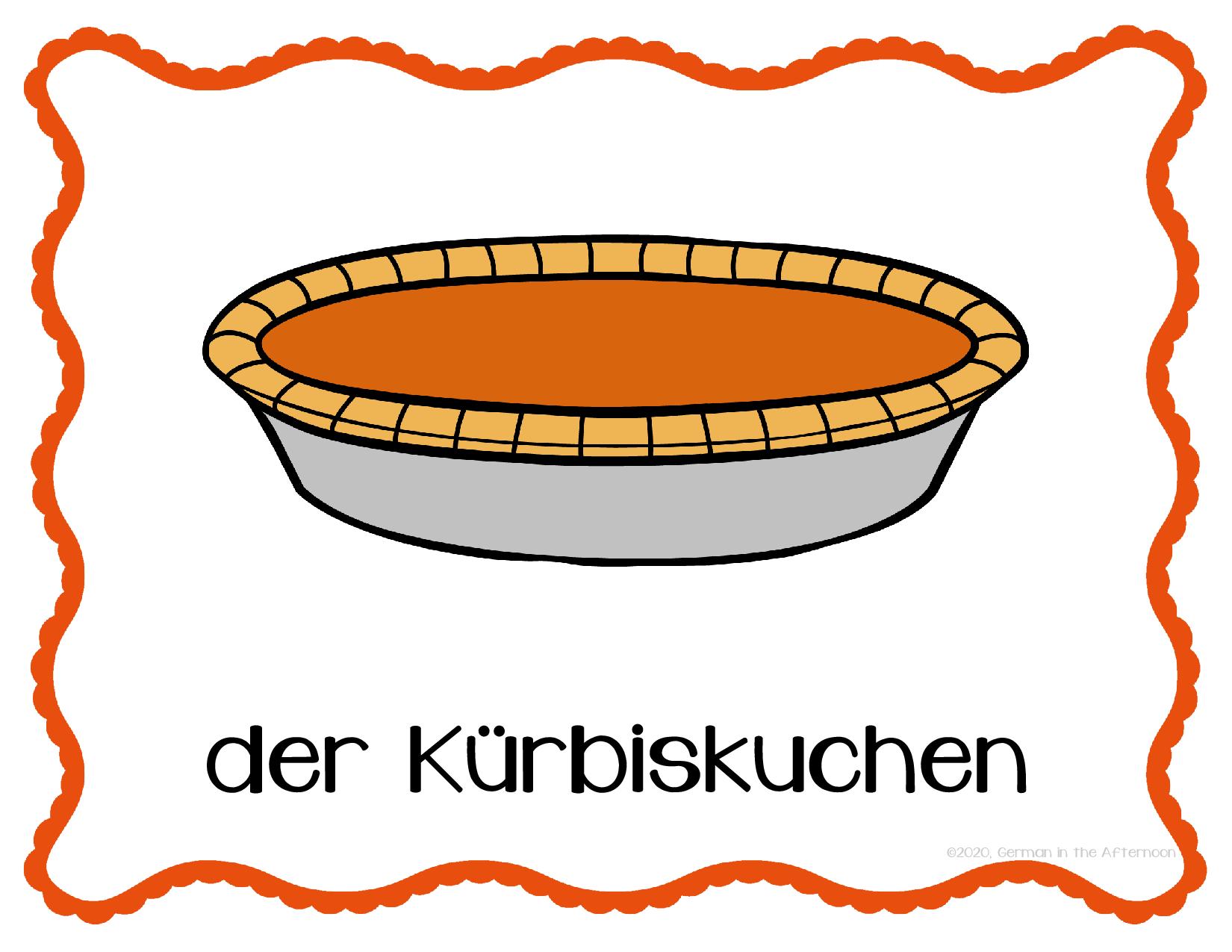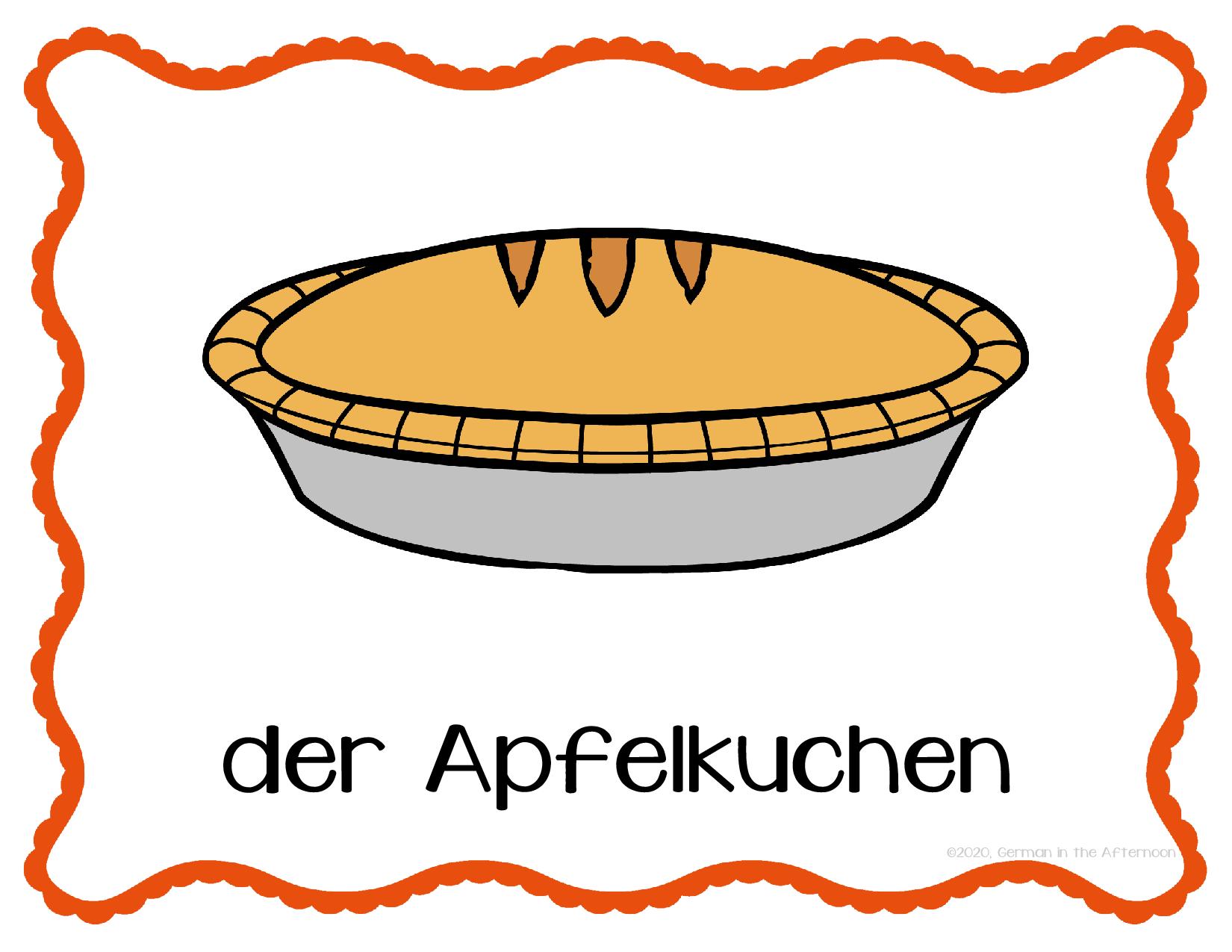As a follow-up to my post from last week introducing food items you would find at a traditional Thanksgiving dinner, I created a few more accompanying materials.
In my 1st & 2nd grade class, I thought I would do a survey of who likes which foods. I will ask: “Wer isst x gern?” If they like it, they can stand up, if they don’t they stay seated. We will then count – in German, of course! – the students who are standing. And I will record the number in the box next to the food.
I made a similar sheet with smaller boxes as a handout, so the children can mark their own papers to show which foods they like to eat – Ich esse … gern!


